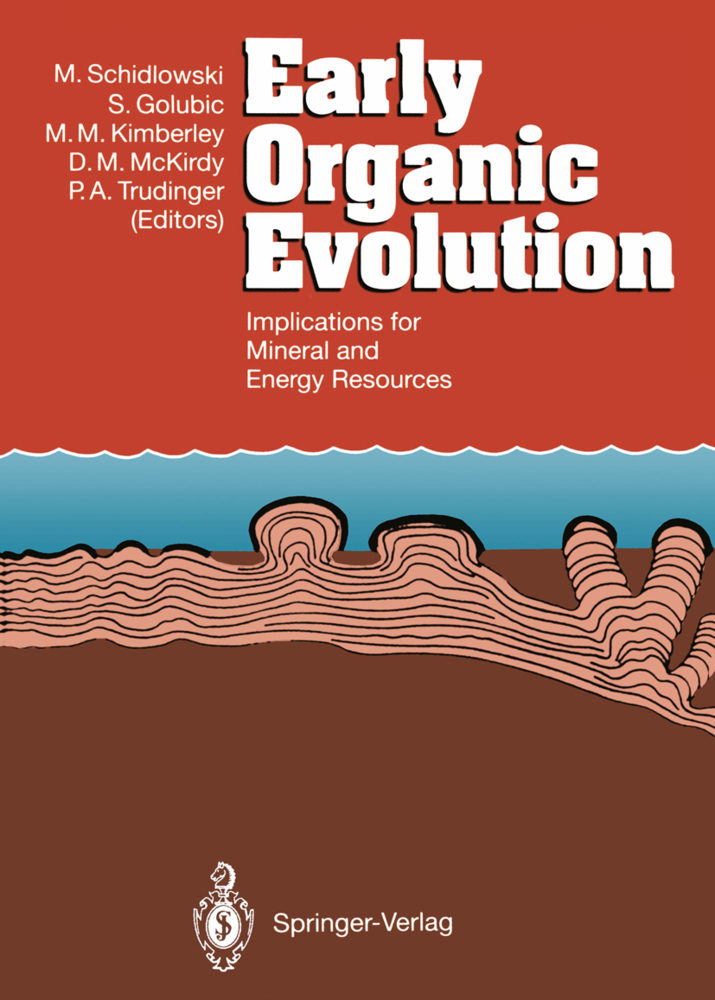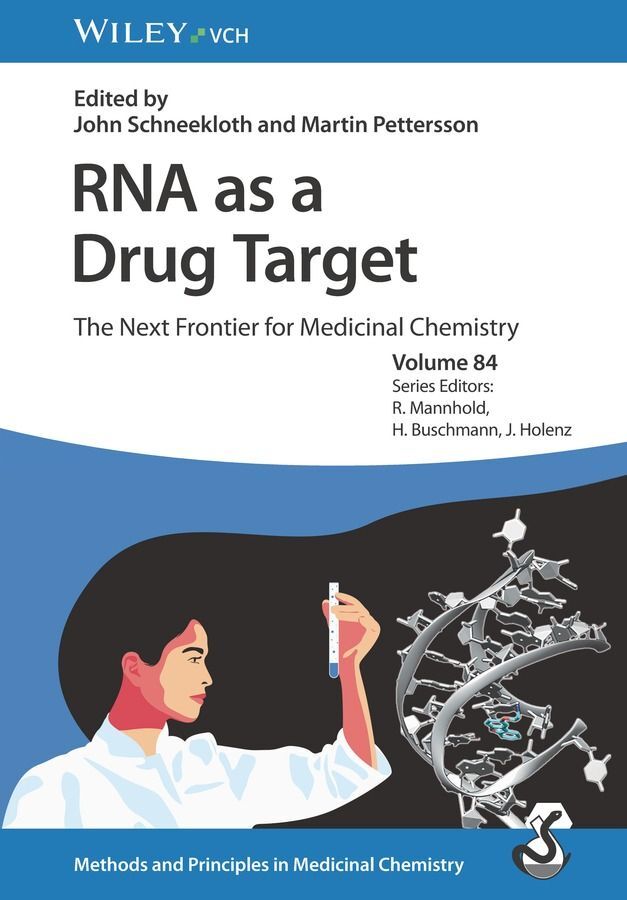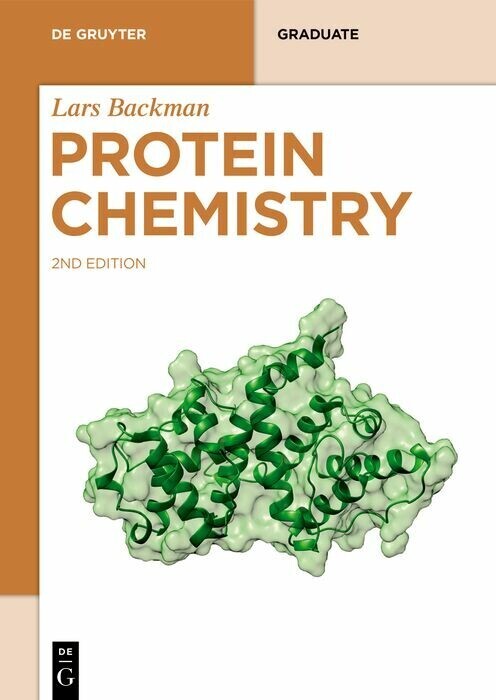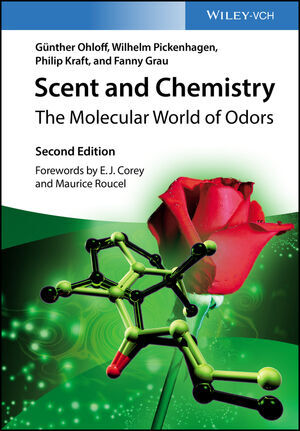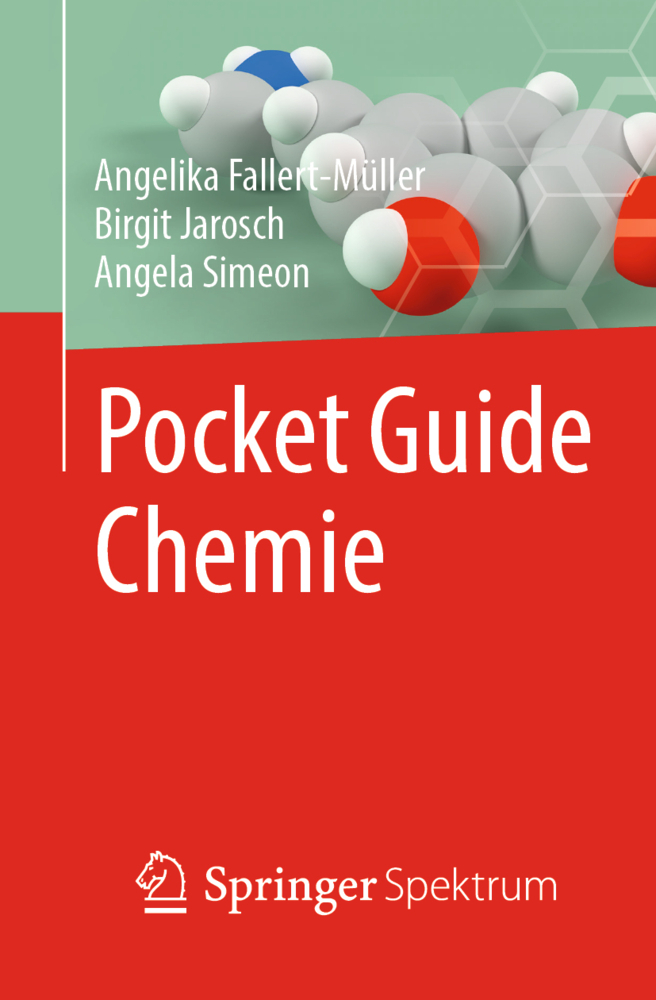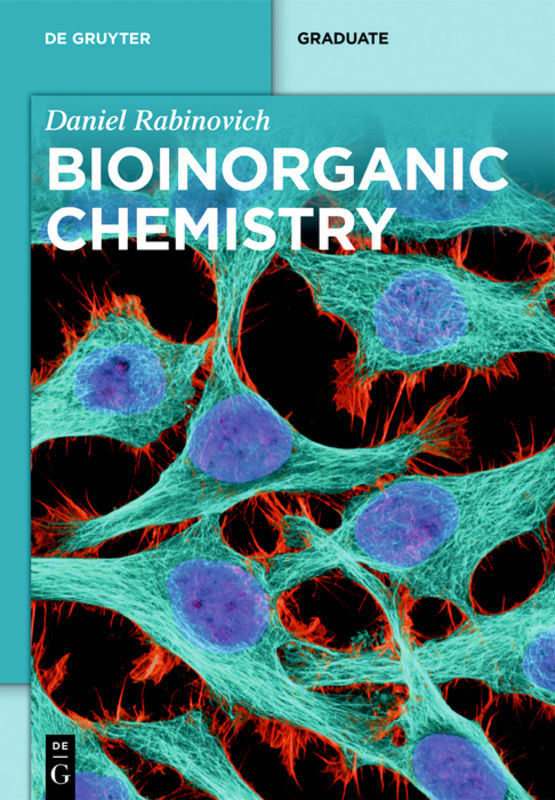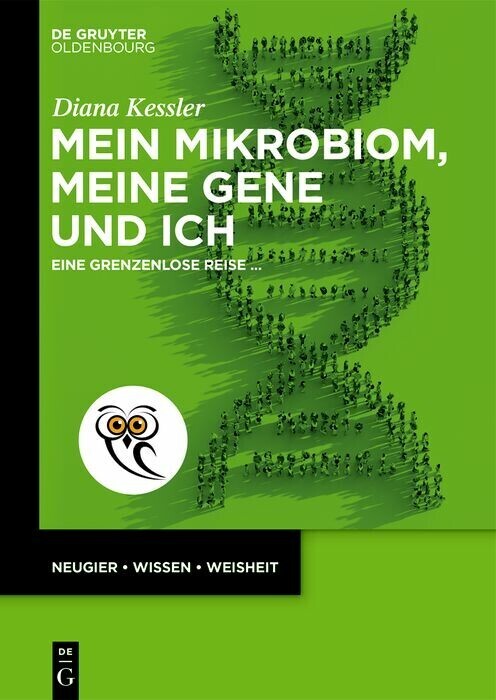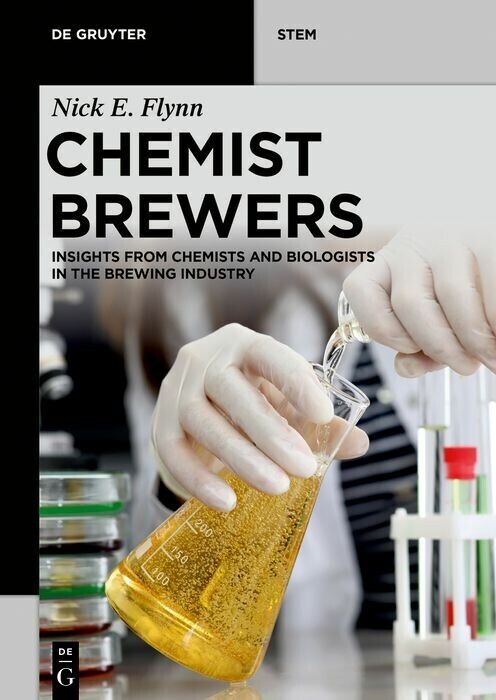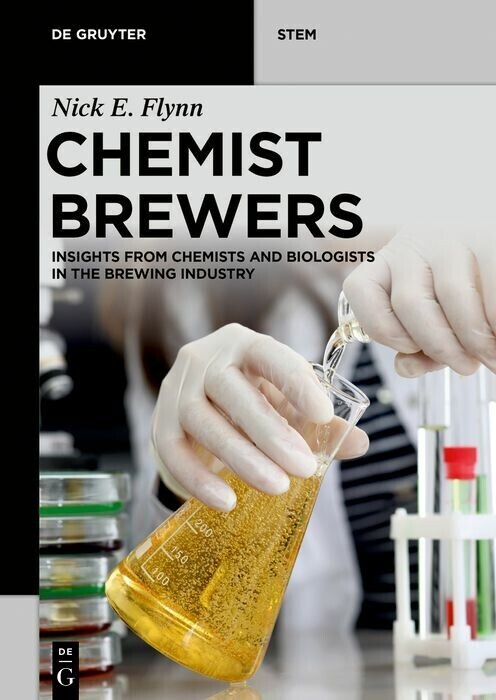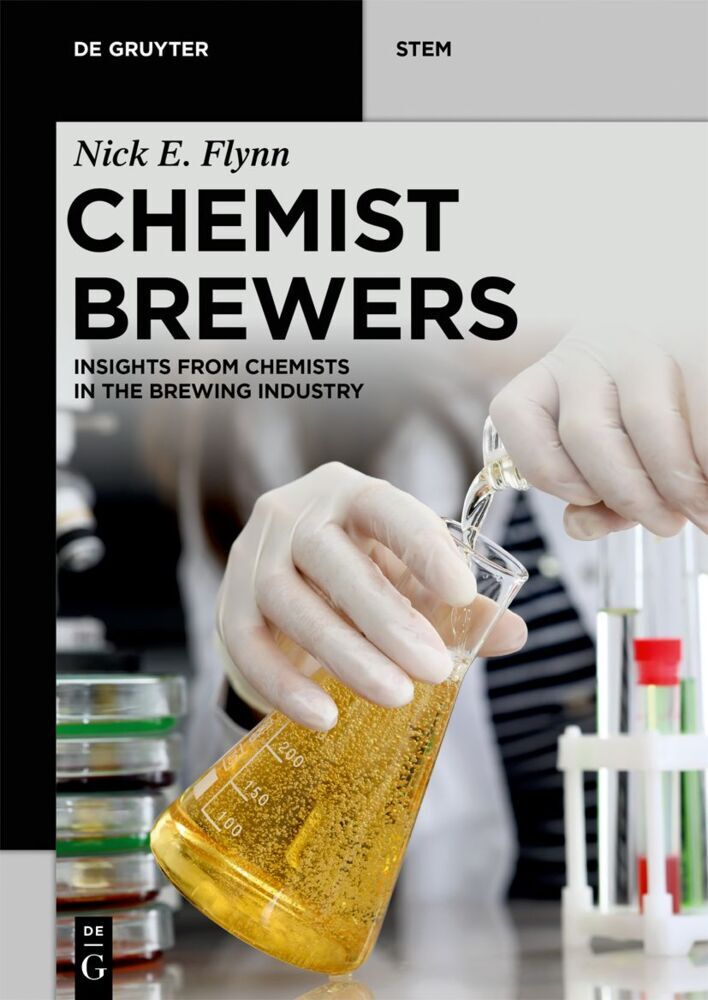Early Organic Evolution
Implications for Mineral and Energy Resources
Early Organic Evolution
Implications for Mineral and Energy Resources
This volume is the final outcome of a conference designed to wrap up IOCP Project 157 (" Early Organic Evolution and Mineral and Energy Resources ") after a decade of prolific activity. The picturesque solitude of Maria Laach Abbey in the Eifel Mountains (FRO) provided the appropriate setting for a conclave of some 80 specialists from the various walks of the field who, during the week of Sept. 19 - 23, 1988, strived hard to define the state of the art in the principal segments of this Earth Science frontier. The following pages contain the essence of the conference transactions, giv ing a vivid cross-section of the activities pursued by IOCP Project 157 during its final years. The coverage of topics is not necessarily complete, but rather eclec tic in part. With regard to single papers dealing with modern analogues of ancient processes, the book title might even be considered a grave misnomer. Neverthe less, all contributions relate to the subject in the widest sense, and the reader should be reminded that much of the heterogeneity reflected by the volume de rives from the fact that it is primarily a research report from a highly inter disciplinary field rather than a textbook.
to Precambrian Weathering and Paleosols
How to Find a Precambrian Paleosol
Experimental Procedures to Simulate Weathering Under Atmospheres. Which May Have Characterized the Early Archean
The Lower Proterozoic Hokkalampi Paleosol in North Karelia, Eastern Finland
Paleosol and Ore-Forming Processes in the Elliot Lake District of Canada
Mineralogy and Geochemistry of the Pre-1.65 Ga Paleosol Under Kombolgie Formation Sandstone of the Pine Creek Geosyncline, Northern Territory, Australia
Carbonaceous High-Alumina Shale in the Transvaal Supergroup: Evidence of Early Proterozoic Karstic Weathering in a Marine Environment
Significance of Precambrian Paleosols
2. Organic Matter in Precambrian and Early Paleozoic Sediments
Mantle Carbon: Concentration, Mode of Occurrence, and Isotopic Composition
Carbon Cycle and Carbon Isotope Record: Geochemical Impact of Life over 3.8 Ga of Earth History
Precambrian Petroleum: A Decade of Changing Perceptions
Paleontology and Biogeochemical Research: A Powerful Synergy
Proterozoic Organic Carbon -Its Preservation and Isotopic Record
An Assessment of the Precambrian/Cambrian Transition Events on the Basis of Carbon Isotope Records
Stratiform and Globular Organic Matter in the Lower Proterozoic Metasediments at Elliot Lake, Ontario, Canada
Organic Carbon Isotopic Composition of Proterozoic Sedimentary Rocks from India: Preliminary Results
Organic Free Radicals in Precambrian and Paleozoic Rocks: Origin and Significance
On the Atypical Petroleum-Generating Characteristics of Alginite in the Cambrian Alum Shale
Distribution and Structure of Hydrocarbons and HeterocyclicSulfur Compounds Released from Four Kerogens of Ordovician Age by Means of Flash Pyrolysis
Thermal Maturity of Early Paleozoic Sediments as Determined by the Optical Properties of Marine-Derived Organic Matter -A Review
Hydrocarbon Composition of the Late Proterozoic Oils of the Siberian Platform: Implications for the Depositional Environment of Source Rocks
Biomarkers and Other Hydrocarbons in Upper Sinian Stromatolitic Dolostones from Southwest China
Natural Gas in Sinian Reservoirs of the Weiyuan Area, Sichuan Province: The Oldest Gas in China
Biological Markers in Paleozoic Sedimentary Rocks and Crude Oils from the Michigan Basin: Reassessment of Sources and Thermal History of Organic Matter
The Influence of Gloeocapsomorpha prisca on the Organic Geochemistry of Oils and Organic-Rich Rocks of Late Ordovician Age from Canada
3. Antiquity and Metallogenic Potential of Bacterial Sulfate Reduction
Sulfur in the Earth's Mantle -A Review
Bacterial Sulfate Reduction: Current Status and Possible Origin
Biogeochemistry of Sulfur and the Mechanisms of Sulfide-Sulfate Mineralization in Archean Oceans
Biological and Abiological Sulfate Reduction in Two Northern Australian Proterozoic Basins
Global Oxidation and a Supercontinent in the Proterozoic: Evidence from Stable Isotopic Trends
Depositional and Diagenetic C - S - Fe Signatures and the Potential of Shales to Generate Metal-Rich Fluids
Genetic Relationship Between Elementary, Organic, and Pyritic Sulfur in Sediments
4. Fossil Microbial Ecosystems of the "Stromatolitic" Type and Their Modern Analogs
The History and Significance of Stromatolites
Proterozoic and Living Cyanobacteria
Lower Precambrian Stromatolite Associations of Karelia
Tussocky Microstructure, a BiologicalEvent in Upper Proterozoic Stromatolites: Comparisons with Modern Freshwater Stromatolite Builders
On the Association of Ore Deposits with Stromatolites
Experimental Hypersaline Ponds as Model Environments for Stromatolite Formation 1. Microbenthos Composition and Biomass Accumulation
Experimental Hypersaline Ponds as Model Environments for Stromatolite Formation 2. Isotopic Biogeochemistry
Palynostratigraphy in Phanerozoic and Precambrian Metamorphic Rocks
5. General Topics
Mineral Deposits and Metallogeny: Indicators of Earth's Evolution
Chemical Evolution of Sedimentary and Magmatic Rocks in the Earth's Crust.
Early Organic Evolution and Mineral and Energy Resources: A Farewell Address to IGCP Project 157
1. Precambrian Weathering and Paleosolsto Precambrian Weathering and Paleosols
How to Find a Precambrian Paleosol
Experimental Procedures to Simulate Weathering Under Atmospheres. Which May Have Characterized the Early Archean
The Lower Proterozoic Hokkalampi Paleosol in North Karelia, Eastern Finland
Paleosol and Ore-Forming Processes in the Elliot Lake District of Canada
Mineralogy and Geochemistry of the Pre-1.65 Ga Paleosol Under Kombolgie Formation Sandstone of the Pine Creek Geosyncline, Northern Territory, Australia
Carbonaceous High-Alumina Shale in the Transvaal Supergroup: Evidence of Early Proterozoic Karstic Weathering in a Marine Environment
Significance of Precambrian Paleosols
2. Organic Matter in Precambrian and Early Paleozoic Sediments
Mantle Carbon: Concentration, Mode of Occurrence, and Isotopic Composition
Carbon Cycle and Carbon Isotope Record: Geochemical Impact of Life over 3.8 Ga of Earth History
Precambrian Petroleum: A Decade of Changing Perceptions
Paleontology and Biogeochemical Research: A Powerful Synergy
Proterozoic Organic Carbon -Its Preservation and Isotopic Record
An Assessment of the Precambrian/Cambrian Transition Events on the Basis of Carbon Isotope Records
Stratiform and Globular Organic Matter in the Lower Proterozoic Metasediments at Elliot Lake, Ontario, Canada
Organic Carbon Isotopic Composition of Proterozoic Sedimentary Rocks from India: Preliminary Results
Organic Free Radicals in Precambrian and Paleozoic Rocks: Origin and Significance
On the Atypical Petroleum-Generating Characteristics of Alginite in the Cambrian Alum Shale
Distribution and Structure of Hydrocarbons and HeterocyclicSulfur Compounds Released from Four Kerogens of Ordovician Age by Means of Flash Pyrolysis
Thermal Maturity of Early Paleozoic Sediments as Determined by the Optical Properties of Marine-Derived Organic Matter -A Review
Hydrocarbon Composition of the Late Proterozoic Oils of the Siberian Platform: Implications for the Depositional Environment of Source Rocks
Biomarkers and Other Hydrocarbons in Upper Sinian Stromatolitic Dolostones from Southwest China
Natural Gas in Sinian Reservoirs of the Weiyuan Area, Sichuan Province: The Oldest Gas in China
Biological Markers in Paleozoic Sedimentary Rocks and Crude Oils from the Michigan Basin: Reassessment of Sources and Thermal History of Organic Matter
The Influence of Gloeocapsomorpha prisca on the Organic Geochemistry of Oils and Organic-Rich Rocks of Late Ordovician Age from Canada
3. Antiquity and Metallogenic Potential of Bacterial Sulfate Reduction
Sulfur in the Earth's Mantle -A Review
Bacterial Sulfate Reduction: Current Status and Possible Origin
Biogeochemistry of Sulfur and the Mechanisms of Sulfide-Sulfate Mineralization in Archean Oceans
Biological and Abiological Sulfate Reduction in Two Northern Australian Proterozoic Basins
Global Oxidation and a Supercontinent in the Proterozoic: Evidence from Stable Isotopic Trends
Depositional and Diagenetic C - S - Fe Signatures and the Potential of Shales to Generate Metal-Rich Fluids
Genetic Relationship Between Elementary, Organic, and Pyritic Sulfur in Sediments
4. Fossil Microbial Ecosystems of the "Stromatolitic" Type and Their Modern Analogs
The History and Significance of Stromatolites
Proterozoic and Living Cyanobacteria
Lower Precambrian Stromatolite Associations of Karelia
Tussocky Microstructure, a BiologicalEvent in Upper Proterozoic Stromatolites: Comparisons with Modern Freshwater Stromatolite Builders
On the Association of Ore Deposits with Stromatolites
Experimental Hypersaline Ponds as Model Environments for Stromatolite Formation 1. Microbenthos Composition and Biomass Accumulation
Experimental Hypersaline Ponds as Model Environments for Stromatolite Formation 2. Isotopic Biogeochemistry
Palynostratigraphy in Phanerozoic and Precambrian Metamorphic Rocks
5. General Topics
Mineral Deposits and Metallogeny: Indicators of Earth's Evolution
Chemical Evolution of Sedimentary and Magmatic Rocks in the Earth's Crust.
Schidlowski, Manfred
Golubic, Stjepko
Kimberley, Michael M.
| ISBN | 978-3-642-76886-6 |
|---|---|
| Artikelnummer | 9783642768866 |
| Medientyp | Buch |
| Auflage | Softcover reprint of the original 1st ed. 1992 |
| Copyrightjahr | 2011 |
| Verlag | Springer, Berlin |
| Umfang | XVIII, 555 Seiten |
| Abbildungen | XVIII, 555 p. |
| Sprache | Englisch |

